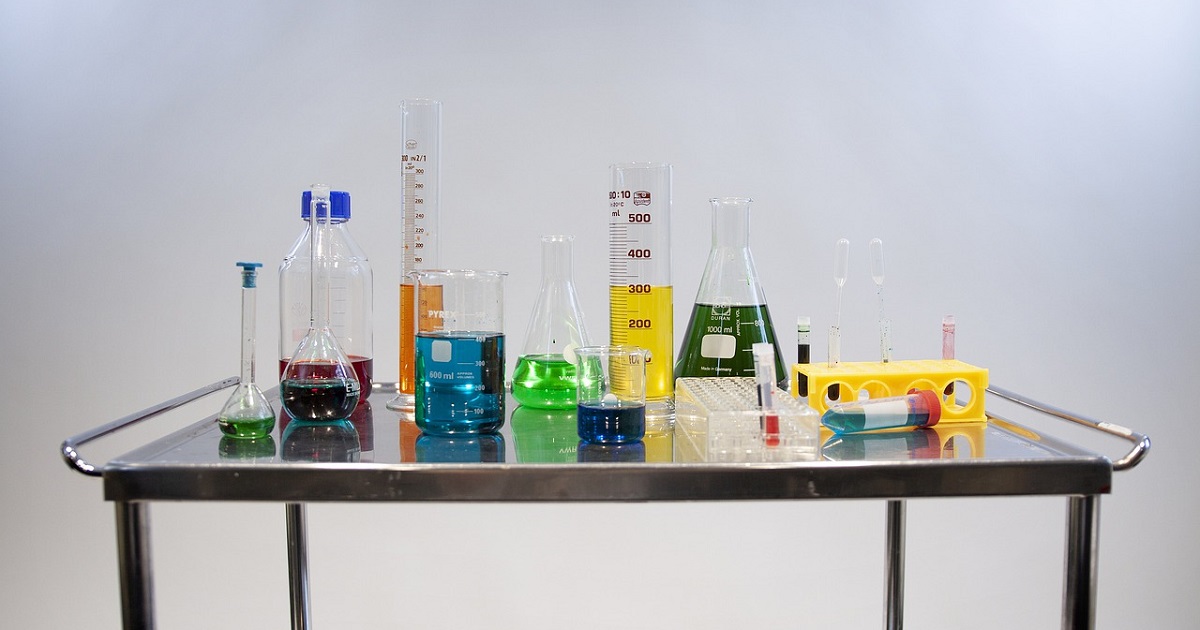
Chemical Management
Article | July 14, 2022
BEFORE the pandemic, GDP growth rates in the developing world were always higher than in developed economies.And because developing economies had much lower levels of petrochemicals consumption than their rich counterparts, it meant that the multiples over GDP were higher than in the rich word, where consumption was pretty much saturated.
For instance, polyethylene (PE) demand in a developed country such as Germany might have grown at 0.3% times GDP whereas in Indonesia the growth could have been one or more times higher than the rate of growth in GDP.But as The Economist wrote in this 11 July article: “In 2021 the poorest countries, which are desperately short of vaccines, are forecast to grow more slowly than rich countries for only the third time in 25 years.”
Might the multiples over GDP growth also be adversely affected in the developing world, trending lower than the historic norms?
They will almost certainly remain higher than the rich countries. But here is the thing: as millions more people are pushed back into extreme poverty by the pandemic or are denied the opportunity to achieve middle-income status, I believe that developing-world multiples may well decline.Escaping extreme poverty means being able to, say, afford a whole bottle of shampoo for the first time rather than a single-serve sachet, thereby raising per capita polymers consumption.
Read More

Chemical Technology
Article | July 14, 2022
Individual consumers expect tailored products and services. Color, size, quantity, payment method, and delivery channel options abound. The chemical sector is also now following this suit of action. The global chemicals supply chain has grown steadily for three decades. Chemical businesses are improving their supply chain capabilities to handle complexity and meet client demands. This includes implementing advanced data-driven and cloud-based technologies that enable faster, more flexible, and tailored customer interactions.
Areas of innovation for chemical companies
Living Segmentation
Living segmentation can help chemical businesses better serve clients and satisfy their expectations. This entails adapting supply chain capabilities to each customer's needs.
Asset-light Network
An asset-light network involves developing an ecosystem of partners to add capabilities and value to your supply chain beyond standard co-manufacturing, co-packing, and third-party or last-mile logistics providers. In addition, it should include technology partners that help chemical businesses innovate and be adaptable.
Data and Applied Intelligence
Improving speed, agility, and efficiency in global supply chains demands comprehensive visibility and the correct information. Data provides visibility and insights. The key to providing excellent customer service is gathering the appropriate data and using it strategically to get important insight. The industry generates a ton of data, which is excellent news.
In response to last year's supply chain delays, corporations are building supply chains with geographically spread shipping/supplier choices. Real-time visibility and enhanced analytics can be used to track delays by providing revised ETAs and analyzing downstream implications. Data-driven insights can alert organizations of a delay almost immediately and help them acquire raw materials from another supplier to reduce the domino impact downstream. Chemical businesses must rethink their supply chains to implement living segmentation, asset-light networks, data, and AI.
Read More

Chemical Technology
Article | July 20, 2022
Downhole fluid build-up coupled with a drop in reservoir pressure can lead to the rapid decline of gas production rates, and can ultimately result in a well ceasing production. While there are many ways to deliquify a well to maximise production, chemical foamers can be incredibly effective and well worth considering. In this blog post, Kevin Lonie shares some of the benefits of using chemical foamers, and provides insights and advice around how best to use them… “Foamers are a much cheaper option than alternative solutions, such as mechanical lifts, and there is very little risk associated with their usage. If a foamer doesn’t work, it won’t make the well worse - so often we see clients giving them a go before opting for more expensive methods, in the hope that they produce the desired results. And we have seen their success over and over again.”
Read More

Chemical Technology
Article | August 8, 2022
Used to separate and analyze compounds into their various components— chromatography plays a crucial part not just in the food industry but in the realms of drug testing, forensics, and even quality control in our favourite alcoholic drinks as well.
Advanced Chromatography is an analytical technique introduced to the world by chromatography instrument companies to separate and analyze individual chemicals from complex compounds. Recent developments in the biotechnology and pharma industries have created a significant surge in the chromatography market.
Read on to find out five fascinating facts about the day-to-day applications of chromatography in various industries and why businesses are looking to invest more in OEM chromatography manufacturing.
Why are Industry-Decision Makers Adapting to Chromatography?
Liquid Chromatography; A Popular Choice in Drug Testing
Today, a lot of drug tests use liquid chromatography-mass spectrometry because it is easy to use, widely available, and gives quick results. LC and LC-MS can be done in almost any testing facility, which is different from other methods. It can be run by people with little training, so a testing facility can hire mostly technicians instead of highly trained scientists, who are harder to find. LC-MS is also very accurate, which means that there are fewer false positives.
With liquid chromatography, you can get results in about 10 to 30 minutes, which is very fast. This technology is used by many drug testing labs across the country. It is widely used and trusted for testing drug samples and many other things.
Businesses associated with the sports industry are leveraging chromatography to effectively and accurately test athletes for doping or performance-enhancing drugs.
Use of HPCL in Pharmaceutical Industries
Chromatography is used in the medical and pharmaceutical industries to create vaccines. In addition, chromatography can determine which antibodies best neutralize viruses and diseases.
Mapp Biopharmaceutical, Inc. used the chromatography technique to develop the experimental immunization Zmapp to counteract the deadly Ebola virus. And it is still being used today to fight the coronavirus.
The pharmaceutical industry has gained enormous success by exclusively using HPLC to obtain precise results during drug trials. The results can be used to analyze finished drug products and their ingredients quantitatively and qualitatively during manufacturing.
The Detector in Forensic Science
Chromatography methods are a well-established, powerful suite of methodologies in forensic science, from drug busts, murders, and robberies, to the identification of a plethora of chemical compounds that may be present in samples from terrorist incidents.
Forensics use gas chromatography to help solve crimes. It helps analyze blood and clothing samples, allowing forensic scientists to investigate who and what was present at a crime scene.
In particular instances, chromatography can even help forensic scientists pinpoint the exact whereabouts of the alleged perpetrator and victim before the crime happened. It’s an error-free process. Therefore, it is incredibly helpful in court.
Additionally, chromatography is extremely handy in arson investigations. Most fires have a virtual cocktail of different substances. Every compound and substance differs in size and weight. Chromatography helps break down these varying compounds and substances to help determine what exactly started the fire.
Liquid Chromatography in Food Industry
Liquid chromatography plays a vital role in the food industry nowadays. It absolves and permits the selective removal of a wide variety of flavor and non-flavor-active food ingredients.
The USDA, along with other countries, has prioritized rigorous testing of processed meat's contents. For example, in 2013, it was found that horsemeat was being sold as beef without anyone noticing. As a result, the food industry decided to change its analytical techniques.
Chromatography quickly became the best way to find out what was in processed meats. High-Performance Liquid Chromatography and mass spectrometry were used to ensure that meat labeled beef was actually beef. In addition, it could tell if horse meat was mixed in with the beef, which helped keep people safe.
Bio-Rad Fast Acid Analysis Column in Beverage Testing
Not just food, many beverage manufacturers also use chromatography to ensure that each bottle of their product is the same. But, again, consistent taste is the main priority. And knowing the exact content of each bottle is the most proactive way to measure things.
The Bio-Rad fast acid analysis column has been successfully used by many companies to quantitatively determine vitamin C in juices, fresh drinks, and powdered drinks.
Chromatography Market is Opening New Dimensions in Various Businesses
Undoubtedly, technological advancement has created a vigorous need for chromatography devices. According to Verified Market Research, growing at a CAGR of 3.4% from 2020 to 2027, the chromatography market is projected to reach USD 4.73 billion by 2027.
The chromatography instrumentation market is currently witnessing huge advancements in the design of columns. This is raising the demand for development of better analytical reagents and resins. Increasing collaborations among the existing players, specifically in the Asian market is another propelling factor for this market. Additionally, emergence of green chromatography, increasing usage of chromatography instruments for monoclonal antibody purification, and usage of nanomaterial in chromatography are also fuelling the growth of this market. Plus, increased government funding in research and development activities is further driving the market growth.
With various pharmaceutical and biotechnology companies, chemical, food and beverage, and other industries contributing to its market growth, one thing is for sure— the increase in the chromatography system market is here to stay.
Read More